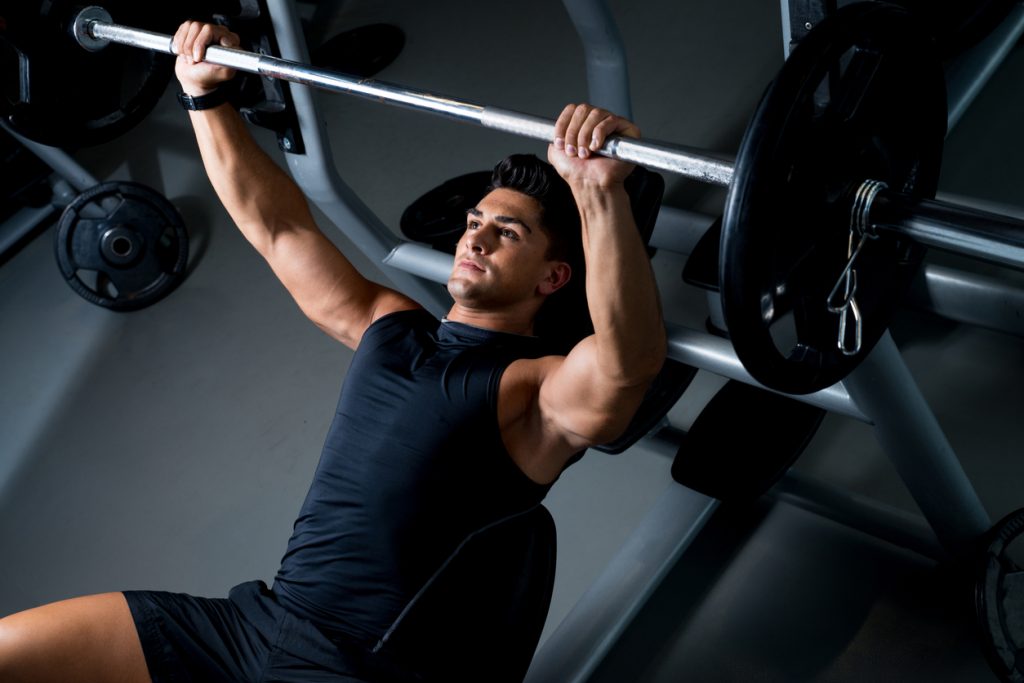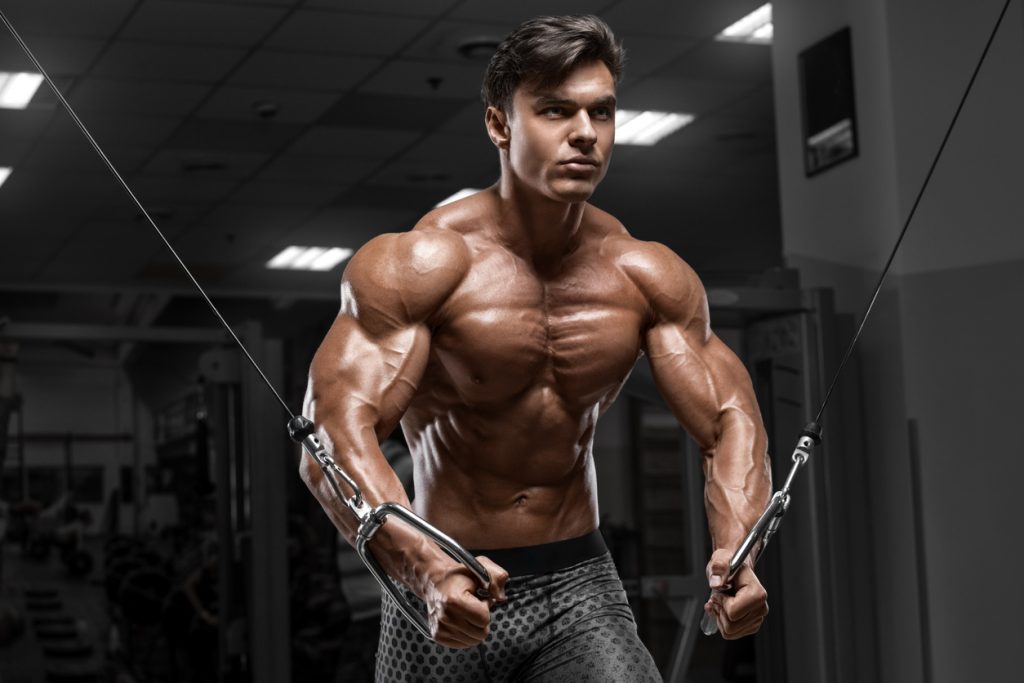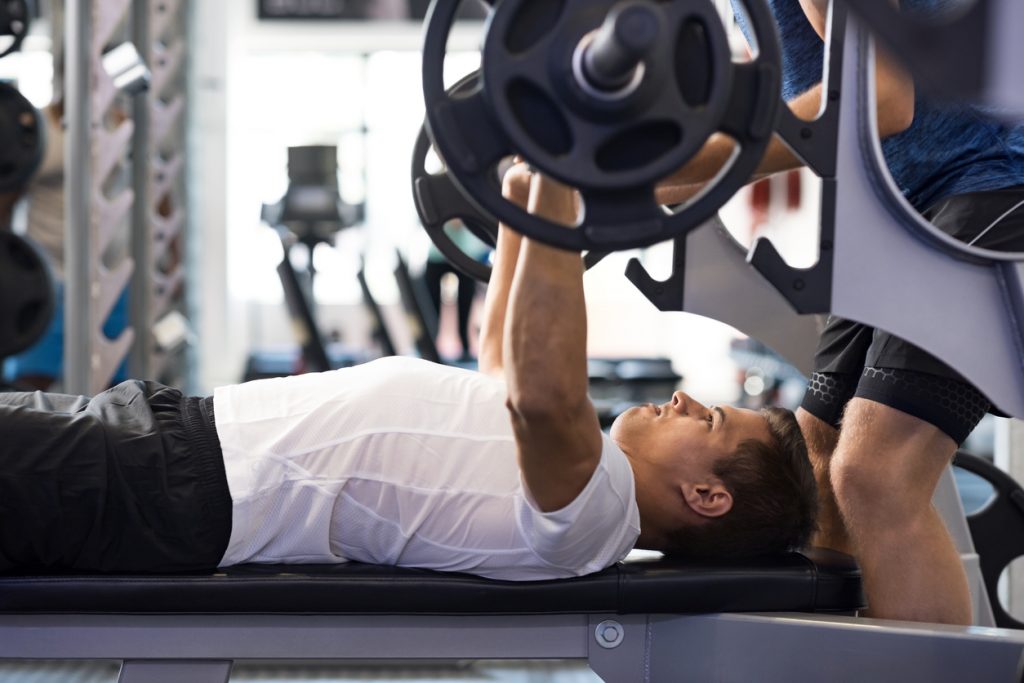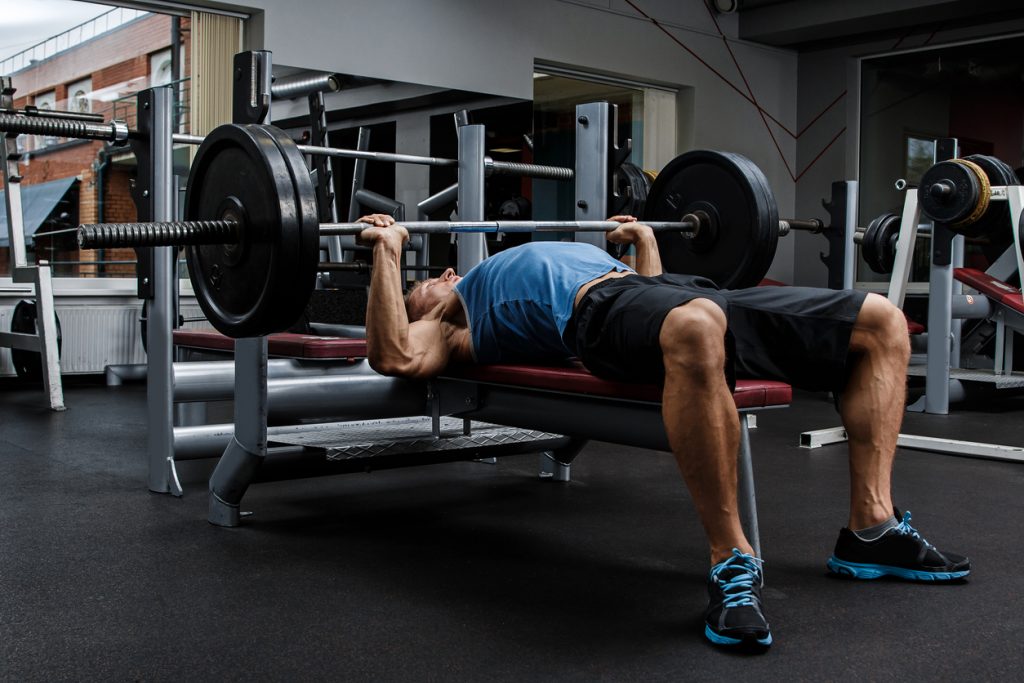When it comes to building up pectoral muscles, the most common exercise performed in the weight room is the bench press. It is a basic poly-articular exercise that employs the shoulder and elbow. Apart from the rectus abdominis for the pectoral muscles, it also works the anterior deltoid and the triceps.
Depending on the type of exercise performed, it can also involve the serratus major, biceps, pectoralis minor, subscapularis and coracobrachialis. This exercise is an ideal ally to evaluate and develop the muscular power of the upper limbs.
All the movements that constitute it seem simple at first glance, since the exercises consist mainly of pushing a certain weight. However, whether it's the incline, decline, bench press or other movements, the correct technique must be mastered to ensure that the pectoral muscles are properly targeted.
How to perform the bench press?
Lie down on a bench press. Position yourself so that the bar on the supports is at the same level as your eyes.
- Place your hands on the bar in pronation, slightly wider than shoulder width apart.
- Bend your legs and fold them down so that your lumbar vertebrae are well pinned to the bench. It is also possible to place your feet flat on the floor or on the edge of the bench to maintain more balance. However, in these cases, the buttocks should not be pushed up while standing.
- Remove the bar from the racks and secure them with the arms extended at the top of the pecs. The load must always be controlled.
- Slowly lower the load until it is close to the pectoral muscles.
- Return to the starting position.
- When the reps are complete, return the bar to the racks with the help of a partner.
During the exercise, the pectoral muscles should be contracted. You can also, at some point, use the back and shoulder blade fixators to limit the work done on the pectoralis minor.
As far as breathing is concerned, breathe in when the bar goes down and breathe out when it goes up. Holding the breath in a complicated phase can stabilize the chest. In case of heavy loads, you should exhale after the difficult phase.
Tips for performing the bench press
In order to ensure the effectiveness of the exercise and to avoid certain injuries, some instructions must be respected.
Control your shoulders
For the exercise to be well targeted and effective, it is essential that the shoulders are fixed on the bench. In this way, as they are stable, they would be able to provide greater force, and a heavier load is possible. To lock them, lower and clasp them, point the elbow inwards, bring the torso out, lower the chin, inhale and align the wrists, then contract the abs and glutes. Do not put your shoulders and chin forward, point your elbows outwards or spread them at shoulder height. This also prevents tendonitis.
Vary the work
It is important to know that the trajectory of the bar is not necessarily vertical. It can be modified according to the targeted part of the body. If you want to target the upper part of the pectoral muscles, you should lower the bar just below the neck. If you want to target the middle pectoral muscles, lower the bar to the middle of the chest. If you want to target the lower part of the pectoral muscles, you should lower the bar at the top of the abdomen, towards the bottom of the chest.
Variations of the bench press
There are various variations of the bench press, which can be used depending on the objectives and target muscles.
The spread grip
This variant targets the outer part of the pectoral muscles. It consists of spreading the hands as wide as possible on the bar. The further apart the two hands are, the more intense the work on this part of the pectoral muscles.
The tight grip
In contrast to the spread grip, the two hands are only slightly apart. They are spread to a width less than the width of the shoulders. This recruits more of the middle pectoral muscles and the triceps.
Dumbbell bench press
Using dumbbells allows you to make wider movements and to stretch your pectoral muscles to the maximum. When the dumbbell is applied to one arm only, it is possible to separate the work of the left and right side, and thus control the power balance of both sides.
The inclined bench press
Here the bench is not straight but leaning upwards. This variation of the bench press targets the upper part of the pectoral muscles and the front of the shoulders.
The decline bench press
In contrast to the inclined bench press, the bench is tilted downwards. This allows you to work the middle of the pectoral muscles as well as the lower part.




